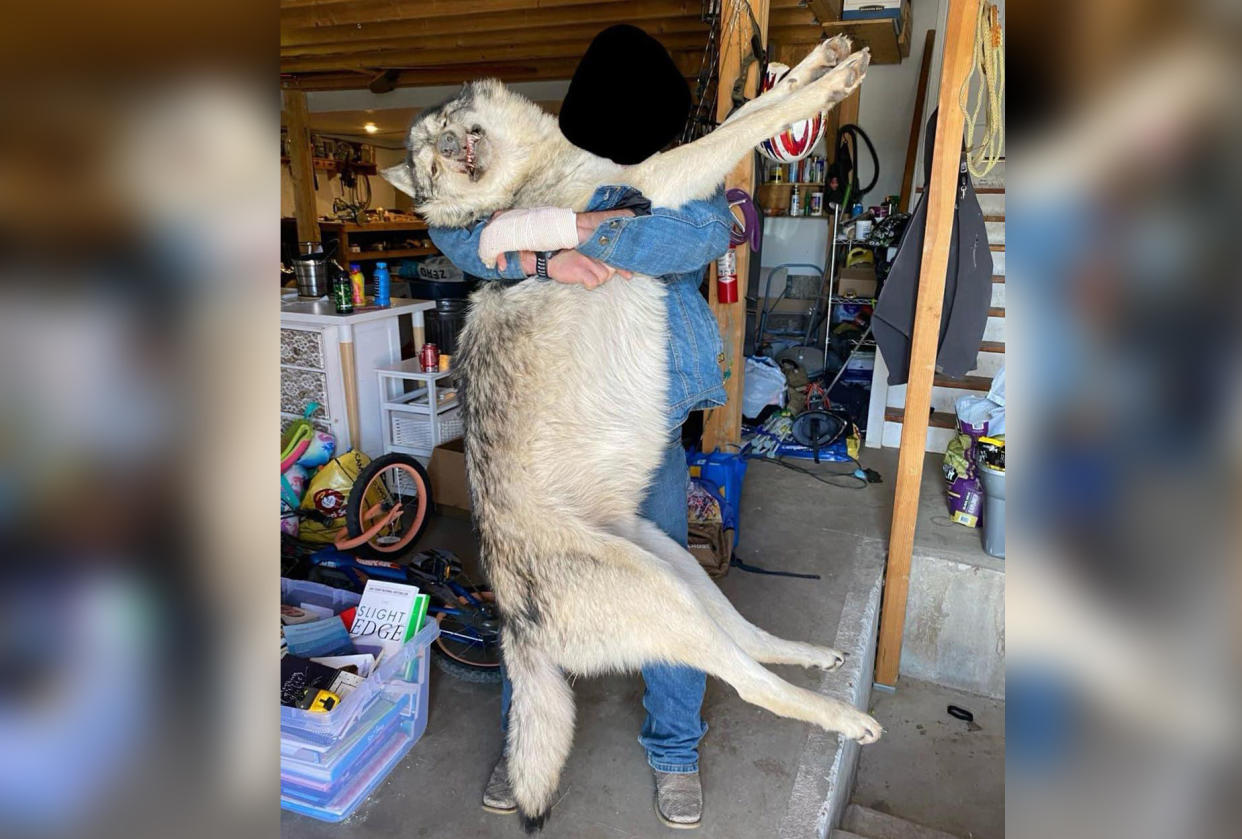Gray Wolf Trapped in Colorado Was from Great Lakes Population, Feds Confirm

On April 3 a rancher in Elbert County found an animal resembling a wolf in a coyote trap on private land, according to a recent article in The Fence Post. A U.S. Fish and Wildlife Service spokesperson confirmed in an email to Outdoor Life that “this animal is a gray wolf from the Great Lakes population.” The USFWS was notified of the discovery by Colorado Parks and Wildlife after the rancher reported it to a CPW wildlife officer. That officer coordinated with the federal agency to collect tissue samples and send them to a lab for DNA analysis. The lab results revealed that the animal in question was a gray wolf from the Great Lakes population, which is genetically distinct from the gray wolf population of the Northern Rockies. “This is not a wolf from the ten recently released by Colorado Parks and Wildlife in December 2023,” the USFWS spokesperson told Outdoor Life. He added that the federal agency was working with CPW to investigate the discovery, as gray wolves in the Great Lakes population — unlike wolves in the Northern Rockies — remain under federal protections as an ESA-listed species. The wolf was an 84-pound male, and it was caught by a trapper in a legal leg-hold trap that had been set for coyotes, according to The Fence Post. Body grip devices, foothold traps, and cable device traps are prohibited in Colorado, but landowners who are eligible for a 30-day agricultural trapping exemption can still use these devices, according to state regulations. The USFWS has not released a cause of death or any other details as part of its open investigation. A Google Maps screenshot showing the location of Elbert County (highlighted in red) as it relates to the Great Lakes Region. Even more puzzling is how a wolf from the Great Lakes region ended up in Elbert County, which lies in eastern Colorado not far from the heavily populated Front Range. Elbert County butts up against El Paso County, where Colorado Springs is located. The county seat of Kiowa is less than 50 miles southeast of Denver and roughly 25 miles east of Interstate 25. The Fence Post reports that the wolf did not have a GPS tracking collar or show any signs that a collar had been removed, and CPW’s wolf activity map does not show any of the state’s known wolves passing through the county in recent months. An unnamed neighboring rancher told The Fence Post he thought the wolf could have been someone’s pet, but there is currently no other evidence supporting this theory. Read Next: Are Wolves Following Moose into Nevada? State Reports First Wolf Pack Sighting in 100 Years It is possible that the wolf made it all the way from the Great Lakes to Elbert County on its own. Gray wolves are known to roam, and in 2023, researchers tracked a collared wolf from Michigan’s Upper Peninsula that traveled more than 4,000 miles over an 18-month period. Minnesota is home to the highest number of gray wolves in the region, with an estimated population of more than 2,500. A map from 2018 shows that the Minnesota Department of Natural Resources has observed wolf packs as far south as Anoka County. That county is located not quite 900 miles as the crow flies from Elbert County, Colorado.

